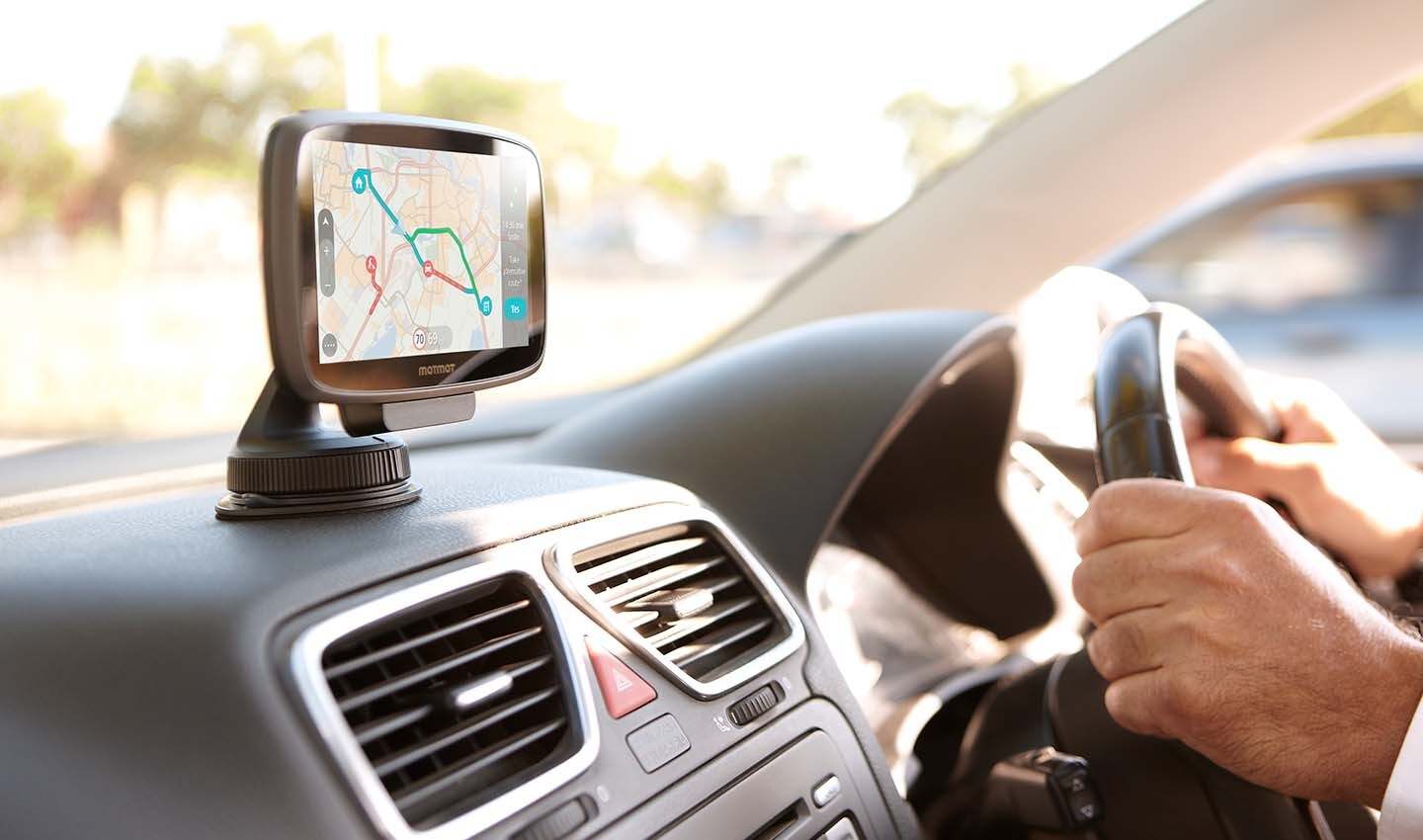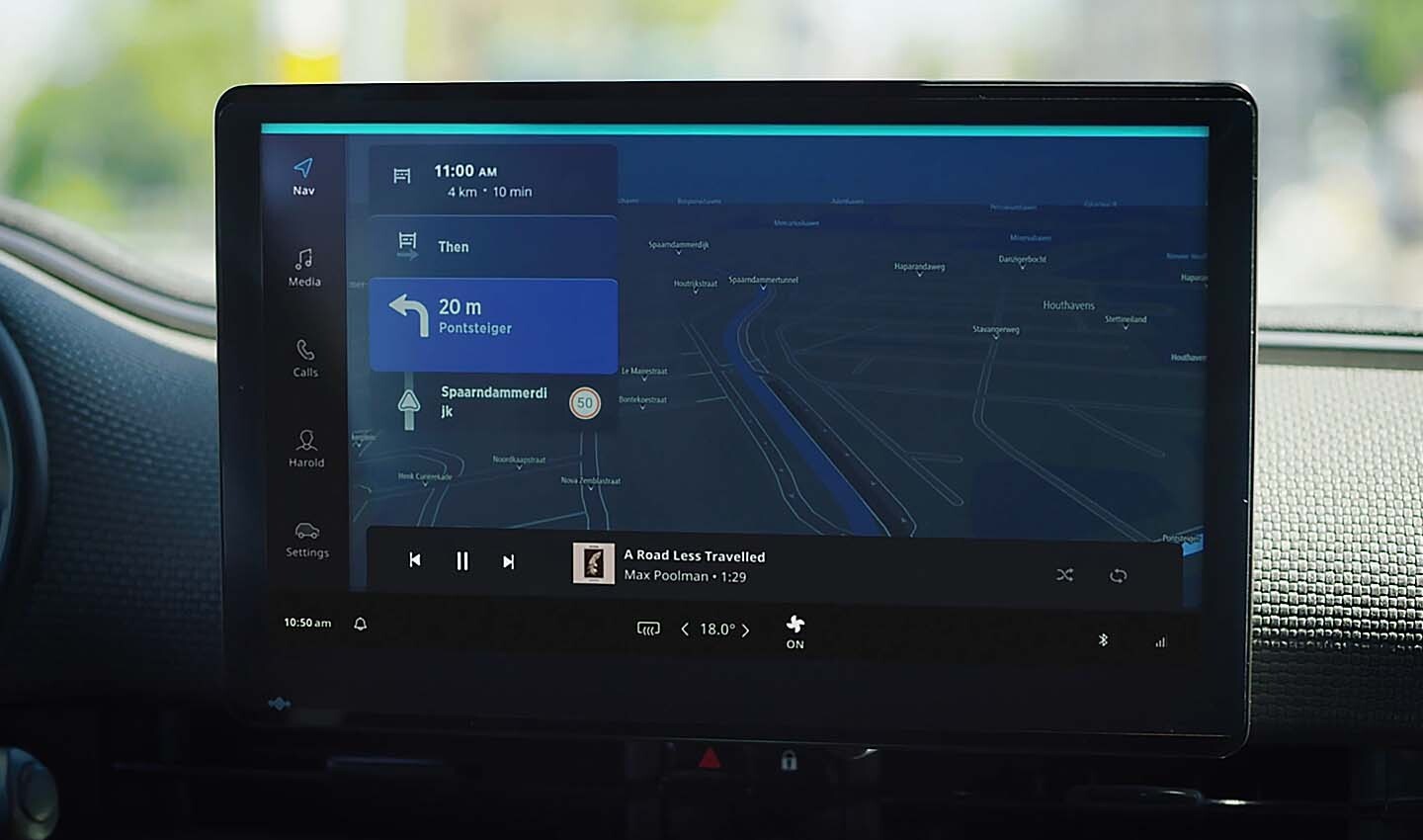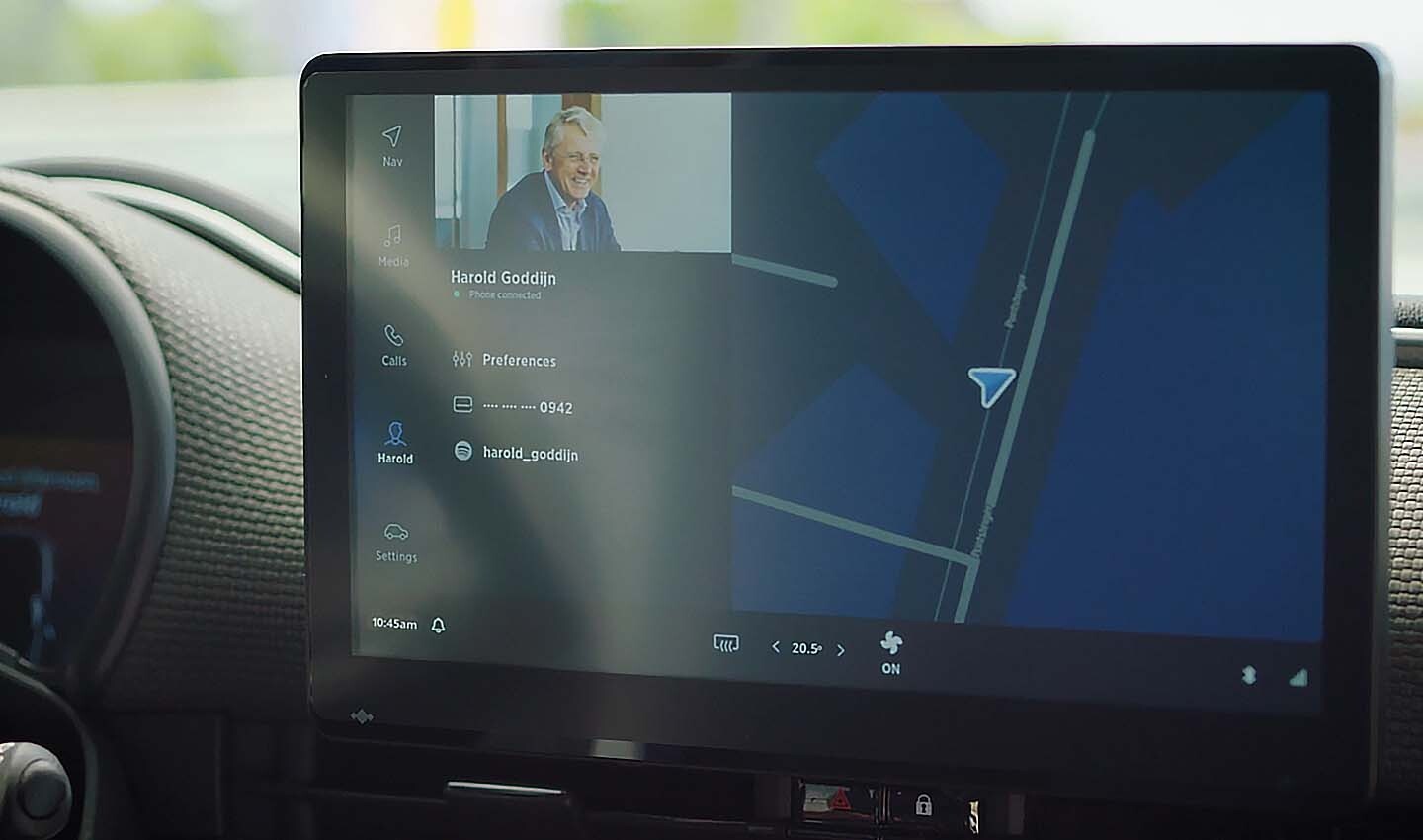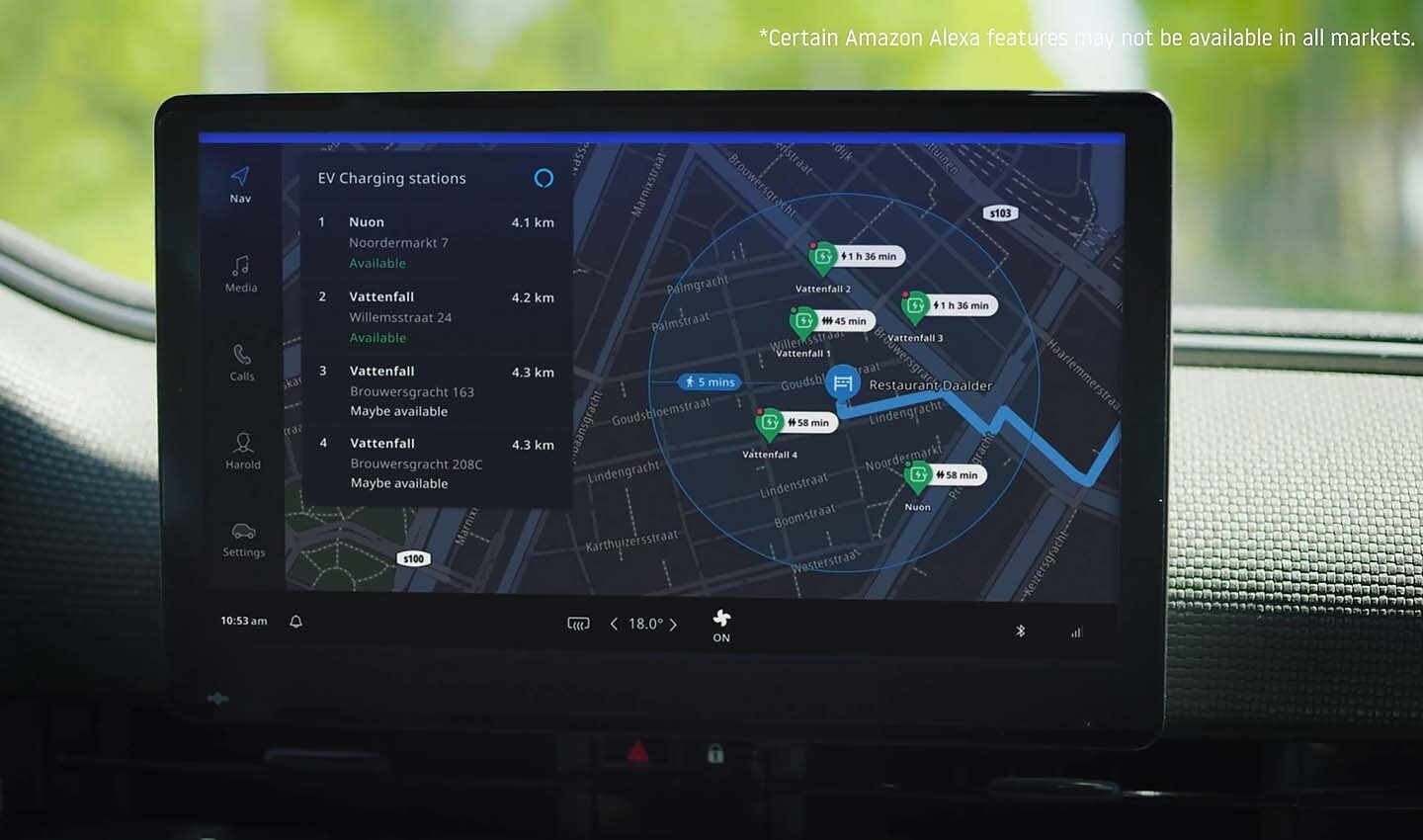
Today, TomTom officially unveiled TomTom Digital Cockpit, its all-in-one platform for carmakers, OEMs, Tier 1s and developers to build in-vehicle infotainment systems and experiences. The geolocation technology company has been teasing us about the product for the past month (with good reason too) and now, we finally know what it’s all about.
Before we get to that, a history lesson.
Fifteen years ago, TomTom unveiled a new kind of device. It was unlike anything that had come before, and driving has never been the same since. It was of course, the Portable Navigation Device, the PND. That device set the standard and defined our expectations for in-vehicle navigation in a time before integrated in-vehicle infotainment systems, in a time before smartphones.
The PND meant that we no longer had to plan our journeys ahead of time and print out direction instructions on long reams of paper. It meant we didn’t need to carry maps with us or listen out for traffic updates on the local radio. The PND took care of all of that and allowed drivers to keep their focus on the task of driving.
Thanks to integrated offerings and smartphones, PNDs are now a rarer sight admittedly, but its legacy, its DNA lives on. Elements of TomTom Digital Cockpit are evidence of that.

The TomTom PND brough in-car navigation to the masses in an easy-to-use, all-in-one format that proved incredibly popular.
TomTom Digital Cockpit reimagines the PND philosophy for the modern driving world. A world which is concerned about privacy, expects regular feature updates, desires an experience rich in media with exceptional user interfaces and wants driving to be easier and safer.
It’s understandable that TomTom has been teasing its digital cockpit platform for the past month as it’s one of the company’s most significant product launches in recent years.
What is TomTom Digital Cockpit?
Moving on from the esoteric and philosophical, put simply, TomTom Digital Cockpit is a software platform to help carmakers make driver-focused in-vehicle experiences. These digital cockpits can easily, with just a few lines of code, feature everything from routing and navigation, traffic information, electric vehicle services, smartphone integration and entertainment apps.

TomTom Digital Cockpit will allow carmakers to easily and simply integrate entertainment apps as part of the in-vehicle experience. Music can be played with a simple Alexa command.
On top of that, the platform can be designed and built as carmakers require, it can have their brand become part of the experience.
Being a modular platform, TomTom Digital Cockpit is essentially a foundational set of building blocks that allow developers to build their in-vehicle systems to deliver exactly what their drivers need. However, as it’s also an open platform, developers are empowered to build components they require. Carmakers can specialize their experiences with almost no limits. Third-party developers are also welcome to develop apps and features for the TomTom Digital Cockpit ecosystem too.
Why develop an all-in-one in-car platform?
It’s clear that a platform like TomTom Digital Cockpit will help carmakers bring drivers better in-vehicle experiences. When I say better, what I mean is: more modern, more engaging, easier to understand and continually up to date. It’s something that all carmakers are striving for but has remained out of reach for many due to the constraints of car making, production processes and the complexities associated with tying vehicle software to vehicle hardware.
As Antoine Saucier, TomTom’s managing director of automotive said during the TomTom Digital Cockpit reveal, “Many carmakers freeze the definition of the car more than a year before its produced and then delivered. The latest innovations are left on the side of the road and have to wait for the next facelift or car models to be introduced.”
To make matters worse, current systems for the most part, aren’t designed to be updated regularly. Traditionally, vehicle updates had to be done at a service center.
As TomTom’s VP of UX design Sonja Radenkovic added, “Systems are delivered once, and remain static and unchanged.”
However, as technology in other parts of our lives has developed at a rapid pace, driver expectations have moved on. We want everything to be connected. We want integration, not a random assortment of disconnected apps fighting for screen space. We want our digital lives to be supported everywhere, on our phones, on our tablets, on our laptops, on our TVs, and now, in our cars. But that’s not easy.
“It’s common for us to move from tablet to mobile phone to laptop to the car and back,” TomTom CEO Harold Goddijn said. “Designing a user experience for drivers is challenging… we want things to work as they work on other devices, but driving a car is very different from operating a mobile phone.”
A single system, integrated
There are solutions on the market that do a good job of presenting a phone’s features and interface on a vehicle’s infotainment screen, but these aren’t native to the vehicle. These kinds of systems run on top of the vehicle’s main interface, and bring basic phone functionalities to the vehicle spread across various apps.
They are still very much separate from the vehicle. While they might bring familiar navigation or entertainment apps to the vehicle’s main screen, they can’t provide an interface to control core features of the car such as heated seats, air conditioning or ADAS functions. It’s all a bit disconnected.
What’s more, as we take our digital lives into our cars, we need to be mindful of privacy. We know how valuable data can be, the impact it can have on individuals and society when it’s manipulated. Driving is an incredibly personal experience; our car goes where we go. It’s possible to infer a lot about a person based on how they drive, where they drive and when they drive. It’s important that that data doesn’t fall into the wrong hands.
TomTom says TomTom Digital Cockpit is going to solve all of that.
From the ground up, TomTom Digital Cockpit is designed to integrate with our phones. Rather than seeing a host of competing apps on our in-vehicle screens, with TomTom Digital Cockpit the vehicle will integrate with our digital lives while also recognizing the fact that we’re driving a car – a task which comes with its own host of specialist user interface requirements.
 When the driver enters an TomTom Digital Cockpit equipped vehicle, it will recognize them based on their phone connection and sync their preferences and important information, such as upcoming calendar events.
When the driver enters an TomTom Digital Cockpit equipped vehicle, it will recognize them based on their phone connection and sync their preferences and important information, such as upcoming calendar events.“We have created a user experience that’s safe, feels intuitive and neatly integrates with all the functions of the car. It always takes the environment and the situation of the driver into account. Everything is smooth, it feels familiar, and it feels like it’s part of one big system,” Goddijn adds.
During the unveil, Goddijn showed off several of TomTom Digital Cockpit’s native features. Getting in the car, the vehicle recognizes the driver and loads their preferences. It syncs with the driver’s calendar and already knows where to navigate to based on the location saved in the appointment. Using Alexa, it’s easy to cue up some music without taking eyes off the road or hands off the wheel. Voice commands can also be used to easily send text messages and make calls.
Goddijn also demonstrated some of TomTom Digital Cockpit’s EV-first features, such as voice-controlled EV charging search. With the world moving towards electric vehicles, it’s positive to see the location tech company put EV-focused features front and center, as vehicles will come to rely on this kind of thing more and more.
Importantly, when the driver interacts with a TomTom Digital Cockpit, it all happens without affecting the core vehicle experience. The driver will still be shown important information about the vehicle like speed, range, navigation instructions, to keep the user interface easy to understand. When accepting an incoming call, it won’t dominate the screen if turn-by-turn navigation is in use.

TomTom Digital Cockpit has been designed EV first. It puts electric vehicle features, like charging station search, battery level and range, front and center. Goddijn says it gives drivers “range accuracy instead of range anxiety.”
From what we’ve seen so far, it seems that TomTom Digital Cockpit has been designed to bring a driver’s digital life into their car unobtrusively. Connected features do not take over the experience, they supplement it in the way that they should.
Now, the above features are great for drivers, but for OEMs and carmakers, there will be financial benefits too. During the unveil, Goddijn said that TomTom’s aim is to reduce the development cost of in-vehicle infotainment systems by 80% over time.
By creating a fully packaged system it should save time, money and lower risk for carmakers when developing their digital cockpits, as much of the heavy lifting will have already been done. Carmakers won’t have to reinvent their in-vehicle systems for every model, Saucier says.
A few words on privacy
Before I wrap this up, and let you read more about TomTom Digital Cockpit in your own time, it’s important we take a quick look at what privacy means for the platform. Cassandra Moons, TomTom’s data protection officer, explained TomTom Digital Cockpit’s privacy by design approach during the unveil.
Cars have the potential to collect masses of data about the driver, which raises a number of ethical questions, Moons says. For TomTom Digital Cockpit, privacy was a foundational part of how it was designed and built.
Moons says that TomTom Digital Cockpit’s approach to privacy was built on four key values: identity protection, data control, data ownership and no advertising.
In general, TomTom doesn’t need to know who drivers are to deliver its products. The company only requires data about driven routes to provide its products. It also uses aggregated data which further anonymizes the individual. Users are enabled to control their data, where it goes and how it’s used.
Users are also recognized as the owners of their personal data; data is not sold to third parties. TomTom only uses data to improve its own products and services, for this, the company doesn’t need to know sensitive information about the individual.
Finally, the company does not sell advertising. As Moons says, its products are there to “guide drivers on the road, not to sell them stuff.” With that, data is not monetized and it stays away from third parties and advertisers.
The next stop
TomTom Digital Cockpit is an exciting prospect for both drivers and carmakers. By empowering carmakers, OEMS and Tier 1s to use a unified system that can evolve over time, they’ll save money, time and resources. They’ll be able to tailor each TomTom Digital Cockpit version to the specific vehicle it’s used in.
We should expect to see carmakers bring their in-vehicle experiences to life in new and exciting ways, that echo the values of their brands. We should expect user-friendly interfaces. We should expect continual improvements and updates. We should expect our data to remain private.
We should expect our expectations to be met too, thanks to TomTom Digital Cockpit, they should be.
Naturally, car development and production is an incredibly secretive business. Even though TomTom did mention a “first customer”, for now, there is no news on when we’ll see a car with a TomTom Digital Cockpit in the wild for the first time. But given that developing with the platform takes far less time than traditional production cycles there is one thing we do know; it will take carmakers much less time to go from concept to reality than ever before.
Want to find out more about TomTom Digital Cockpit? Follow the link below.
People also read
)
What is a digital cockpit? The future of in-vehicle infotainment
)
The increasing importance of in-vehicle experiences
)
Cars of the future will be defined by their software
* Required field. By submitting your contact details to TomTom, you agree that we can contact you about marketing offers, newsletters, or to invite you to webinars and events. We could further personalize the content that you receive via cookies. You can unsubscribe at any time by the link included in our emails. Review our privacy policy.
&w=256&q=90)